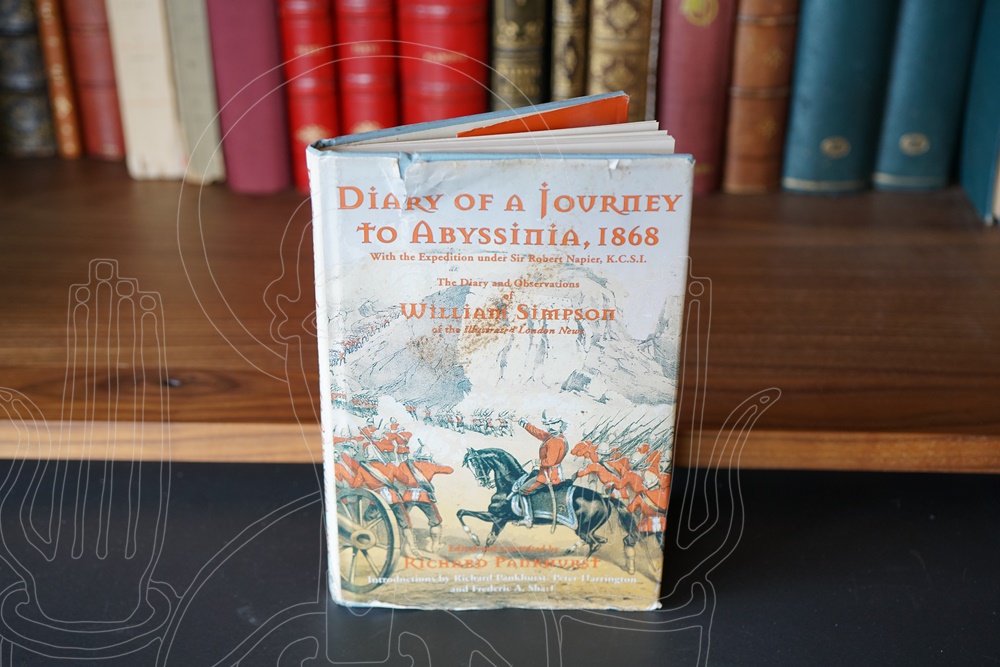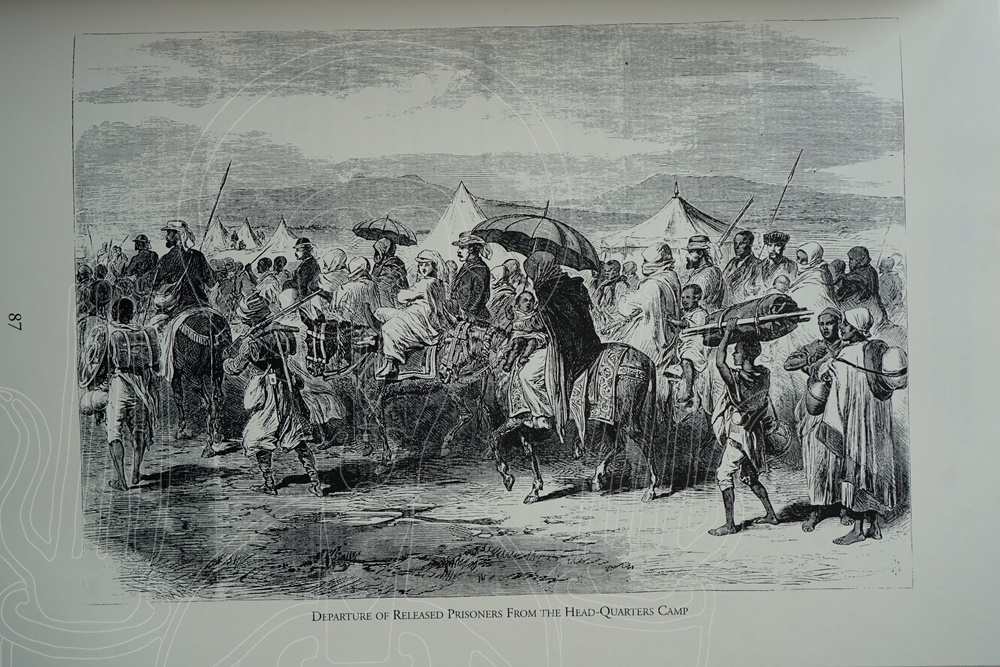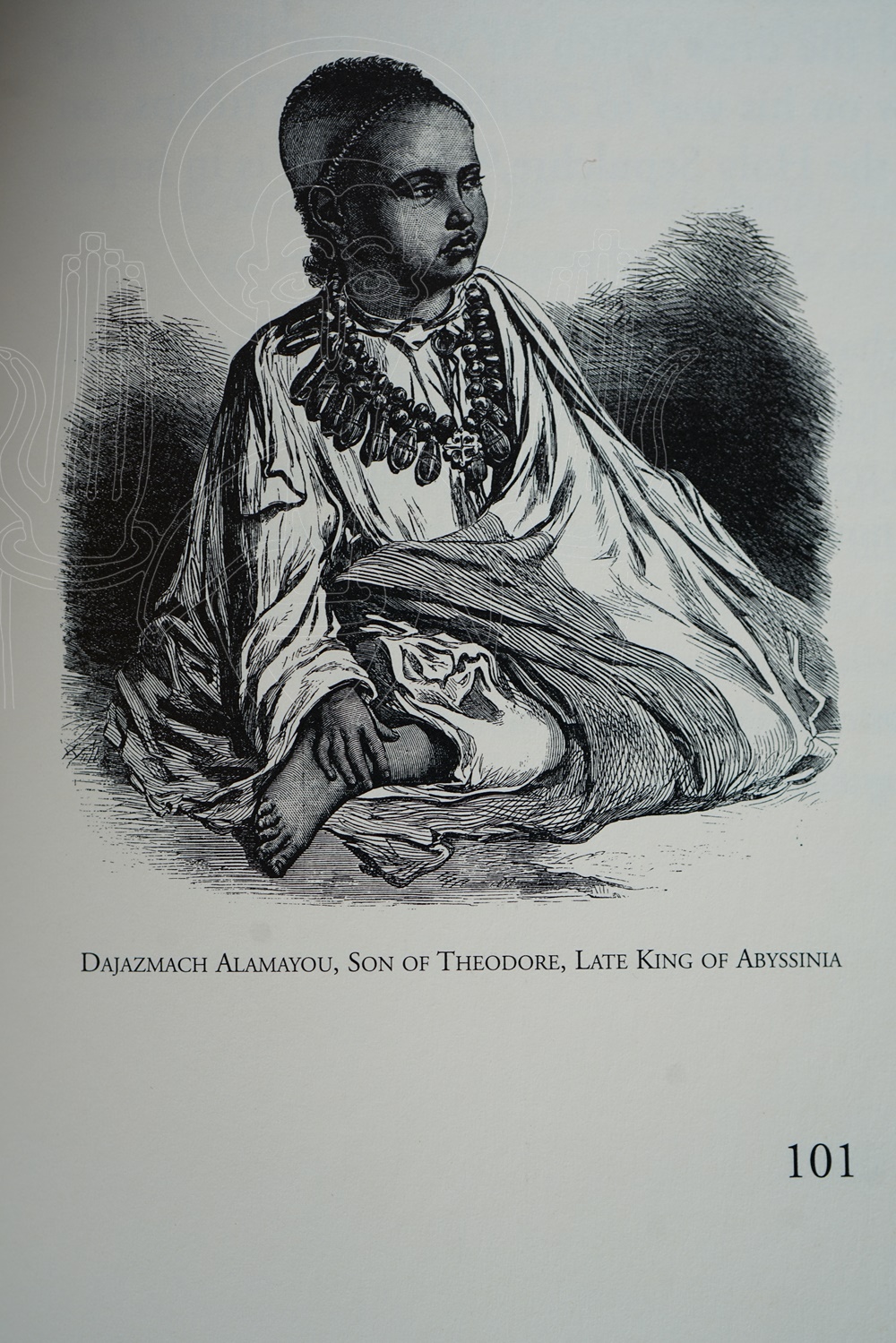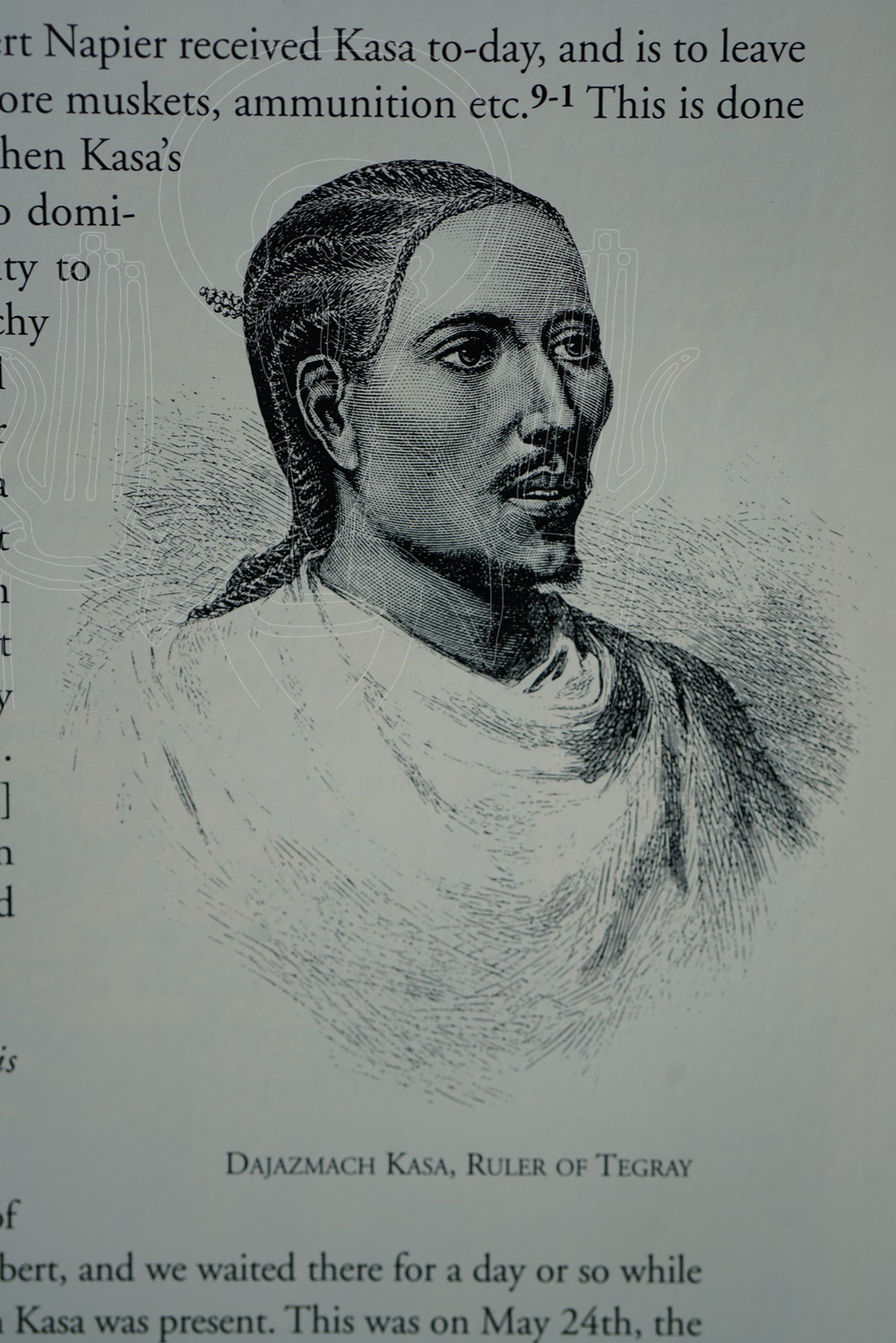Diary of a Journey to Abyssinia 1868. With the Expedition under Sir Robert Napier, K.C.S.I. The Diary and Observations of William Simpson of the Illustrated London News.





Édition
Éditeur : Tsehai
Lieu : Hollywood
Année : 2002
Langue : anglais
Description
État du document : acceptable
Références
Réf. Biblethiophile : 004593
Réf. UGS : 0186803
Première entrée : 1868
Sortie définitive : 1868
COLLATION :
195 p., ill. Introduction by Frederic A. Sharf and Peter Harrington.
En savoir plus
Diary of a Journey to Abyssinia 1868 vu par biblethiophile
En 1999, le collectionneur américain Frederic Alan Sharf[1] acquiert le manuscrit du journal de William Simpson tenu durant sa mission en Éthiopie. Avec le conservateur de la collection Anne S.K. Brown Military Collection conservée à la Brown University Library, Peter Harrigton, et l’aide de Glenn Mitchell de Maggs Bros., il documente le témoignage du journaliste et artiste envoyé par l’Illustrated London News. Quant à Richard Pankhurst, il apporte son expertise, décrit le contexte et se charge d’éditer le tout sous la forme d’un livre pas rebutant pour un sou.
Le 3 mars 1868, alors que Napier est déjà en marche vers Magdala, l’Illustrated London News décide d’envoyer Simpson croquer la prise de Magdala. Malgré toute sa bonne volonté, le journaliste n’atteint pas l’amba avant son assaut par l’armée britannique. Tout au plus, le 20 avril, il croise l’armée vaincue de Tewodros et assiste au départ des prisonniers libérés. Cependant, autant sa marche d’approche que son retour à la côte offrent à Simpson l’opportunité de récolter de précieuses observations et des informations de première main. De fait, sa plus grande contribution est sans conteste ses dessins qui feront le bonheur de la presse contemporaine mais également la littérature modernes.
Diary of a Journey to Abyssinia 1868 édité par Richard Pankhurst s’ajoute aux sources primaires constituées du témoignage des otages, des militaires, des journalistes et autres intervenants collatéraux. Ne manque à l’appel que le témoignage de l’adversaire.
On relèvera que William Simpson n’a pas son entrée dans l’Encyclopaedia Aethiopica et qu’il ne figure pas non plus dans l’index alors que les gravures produites à partir de ses dessins sont allégrement utilisées par les études éthiopiennes sans qu’il n’en soit crédité en bonne et due forme. À l’image du photographe du XIXème siècle, être un artiste sur le champs de bataille était un sacerdoce.
En son honneur, une section regroupant ses illustrations lui est dédiée ici.
Biblethiophile, 20.09.2024, m-.à-j. 29.10.2024
Table des matières
Table des matières
Foreword
Preface: Frederic A. Sharf
Introduction: Richard Pankhurst
Introduction: Peter Harrington
Diary of a Journey to Abyssinia by William Simpson
The Outward Journey:
PART I: London to Annesley Bay
3 March to 25 March, 1868
PART II: The Journey to Adigerat
26 March to 5 April [Includes Easter Sunday]
PART III: Adigerat to Antalo
6 April to 10 April
PART IV: Antalo to Lat
11 to 15 April
PART V: Lat to Dalanta Plain
16 to 20 April
The Return with Expedition Forces:
PART VI: Dalanta Plain to Lake Ashangi
22 April to 5 May
PART VII: Lake Ashangi to Antalo
6 May to 12 May
PART VIII: Antalo to Senafe
May 16 to May 24
PART IX: Senafe to Zoulla
25 May to 2 June
PART X: Annesley Bay to London
11 June to 2 July, 1868
Appendixes:
A: The Design of the Abyssinian Medal
B: Simpson’s Visits to Churches
C: British Military Officers Mentioned in Text
D: List of distances for march of each day
(with alternate place name spellings)
E: British and Indian Units in Campaign
Notes (Listed by Chapter)
Bibliography
Index
Vu par Stephen Bell
The diary arid illustrations of Victorian war artist and war correspondent William Simpson provides a fascinating insight into one of the most bizarre military expeditions ever undertaken by the British army: a nine-month incursion at vast cost, from late 1867 until mid-1868, deep into the interior of the Ethiopian highlands in order to bring about the release of the British consul and other captives of the emperor Towodros II (or Theodore). Many of Simpson’s sketches were reproduced in the Illustrated London News and together with his accompanying reports, they reflect not only the need to record the military aspects of Napier’s campaign for the magazine’s readers but also his interest in the culture, customs and ceremonies of an ancient, remote and mountain-locked outpost of Christianity. Simpson’s interests extend further to the region’s flora, fauna and topography. The Napier expedition these days may be an obscure episode in the annals of the British military history, but in Ethiopia itself its effects still resonate to this day: not least in the looting of manuscripts and other treasures by British troops at Magdala. The campaign for their restitution to Ethiopia remains and will continue as a live and burning issue. The publication of Simpson’s diary is lond overdue, ans Tsehai Publishers is to be warmly thanked for making this possible.
Stephen Bell, a writer on Ethiopian history and an authority on the Napier expedition.
Vu par Sven Rubenson
It is remarkable indeed that the Diary of a Journey to Abyssinia: 1868, written and illustrated by William Simpson, has remained unpublished for almost a century and a half. Anyone interested in the land and people of Ethiopia must welcome the appearance of the Diary of a Journey.
Sven Rubenson, Author of King of Kings, Tewodros of Ethiopia
Vu par Worku Negash
This manuscript is the unearthing of a hitherto buried scholarly treasure regarding a critical era in the long history of the ‘Hidden Empire’, much like an archeological find of immense national significance. The primary assignment of the accomplished Scottish artist and writer William Simpson was to ‘record in pictures the British military campaign against the Emperor Theodore.’ But Simpson treats us to much more. This book makes original, essential, and multi-dimensional contributions to the study of Ethiopian history, antiquities, and ethnography. I recommend it highly. »
Worku Negash, Ph.D. Senior Editor of Ethiopian Review Magazine and Dean of Mission College, Santa Clara, CA.
Vu par Richard Snailham
This is a great contribution to the study of Ethiopia and the British expedition to Ethiopia.
Richard Snailham, Author of A Guide to Magdala.
[1] https://brezniakfuneraldirectors.com/obituary-archive/frederic-a-sharf/ consultée le 20.09.2024